Support Village Voice News With a Donation of Your Choice.
(Food and Agriculture Organisation) Food is priority on everyone’s daily agenda – while some of us contemplate healthy food choices, others simply seek adequate diets to ward off hunger. Simultaneously, across fields and in the farms there are those who toil every day, some from dawn until dusk, to ensure food is available and affordable.
From farm to fork, we are all vital players in the activities, which collectively combine to form food systems – whether as providers of inputs and services, farmers, producers, harvesters, distributors, traders, importers, exporters, manufacturers or consumers. Globally, this system feeds seven billion people every day, and is estimated to have a gross value of just over USD 5 Trillion, according to the Food and Agriculture Organization of the United Nations (UNFAO). In Guyana, the food system feeds the entire country (local and imported foods), provides livelihoods for rural farmers and fisherfolk, and contributes valuable exports earnings to the country.

Even so, global food systems are not without challenge. Despite an abundance of food and a vibrant global trade, approximately three (3) billion people around the world, do not have access to healthy and affordable diets. The Food and Agriculture Organization (FAO) of the United Nations estimates that in Latin American and Caribbean Region, about 26 percent of persons cannot afford healthy diets. In some regions, it is estimated that healthy diets can be as much as five times more costly than a high starch version. Many foods, particularly fresh fruits and vegetables are not easily available to some communities, resulting in an overconsumption of processed food, cereals, sugars and red meat. Centralized food systems often exclude small producers from quality markets and result in the most vulnerable, bearing the highest risks to their livelihoods. Food production and distribution also come with a high cost to the environment, putting significant pressure on the natural resource wealth of many countries. Our food systems are also more vulnerable than ever before.
The complex nature of food systems and the critical role that they play in human development, are among the reasons that UN Secretary General, António Guterres is convening the 2021 Global Food System Summit later this year. Working together, we can transform the way the world produces, consumes and thinks about food, to create greater inclusion and equity, better nutrition for all, better livelihoods, better production models that also leave no one behind. Described by the UN Secretary General as the “The People’s Summit,” it is supported widely by Governments, UN Agencies, academia, food industry partners and civil society. This effort will identify and promote, game-changing, ambitious, concrete actions, underpinned the most forward-thinking science. FAO and the rest of the UN and developing partners are all supporting this global summit.
For Guyana, the summit is timely, to provide input into the country’s transformation agenda for its agriculture sector, supporting its ambitious plans to remain an important economic driver in an emerging oil economy. The Food System Summit dialogue is a stage for both expressing and honing the vision of an agriculture production system that is in step with emerging global food trends and aligned with overall national development strategy.
In preparation for the global Summit, there will be national dialogues that gather national, intersectoral thinking and concrete ideas for action. By an inclusive and bottom up dialogue process, the country can draw on the best ideas, experiences, and evidence from many different sectors and from around the world. If we can focus our efforts on the following five action tracks, it is possible to radically change food systems for the better, by creating sustainable approaches.
Action Track 1 – Ensure Access to Safe and Nutritious Food for all.
Working to end hunger and all forms of malnutrition, this track also seeks to reduce incidence of non-communicable disease. In Guyana, treating diabetes, heart disease, other forms of Non-communicable Diseases and malnourishment are a significant and preventable cost to the healthcare system and contribute to untold suffering by persons and their families. More nutritious, healthy diets, combined with active lifestyles can significantly reduce this burden. With its abundant production of fresh food, pro-poor policies that promote better access to healthy, nutritious diets can have multiple positive impacts, particularly if targeted to vulnerable groups such as single female-headed households, indigenous communities, rural dwellers, the elderly, the unemployed and under-employed, and persons living below or on the poverty line. Other important considerations are working to ensure effective food safety systems protect consumers and facilitate trade opportunities, as well as ensuring that healthy diet options are more widely available throughout the country.
Action Track 2 – Shift to sustainable consumption patterns
Food consumption patterns, driven by current food systems, are simultaneously characterized by poor dietary choices, unbalanced diets, increased over-eating, micronutrient deficiencies, increasing intake of highly processed, high fat, high salt, and high sugar foods and at the same time, unacceptable levels of food wastage. In many countries that are transitioning to greater economic wealth, it is further expected that these issues will become exacerbated over time. While issues of obesity, stunting and wasting, and occurrence of NCDs in Guyana may be lower relative to many other countries, they still represent a significant toll in health costs and human suffering, and are directly related to what we eat.
The rising value of food importation represents additional foreign exchange demands for the country and lost income opportunities for local food producers. At the household level, food wastage can eat into the budget of families and while at the business level, it can significantly reduce profit margin. Food loss in agriculture production reduces efficiency, drives up costs and unnecessarily depletes natural resources. Therefore, working to build sustainable consumption patterns based on efficient food value chains will help to make the country more competitive and healthy.
Action Track 3 – Boost nature-positive production
Globally, agriculture is estimated to be responsible for up to 70% of freshwater extraction and 80% of deforestation. Optimizing the use of natural resources in food production, processing, and distribution is vital to creating successful and sustainable transformation of agriculture in Guyana and preserving natural resource wealth for future generations. This thematic area will be critical to Guyana’s long-term development agenda, and must be aligned with the goals of the Low Carbon Development Strategy. Efforts should also be directed to better understand constraints and opportunities facing smallholder farmers, fishers and small-scale enterprises along the food value chain. Better production and promotes a healthy environment will result to healthy people.
Action Track 4 – Advance equitable livelihoods
The current global food system is recognized as one driver of inequality and this disparity continues to widen. It is ironic that rural communities, in which many farming families live and operate, are often amongst the more food secure. Globally, women make up approximately 43% of the agriculture workforce but often have less access to services and assets that can make them more productive. Although more than a billion persons work in food systems globally, this number is steadily declining, and in many countries, there is an increase in the average age of farmers, meaning that the labour force of food systems is changing. Importantly for Guyana, as the oil and gas sector continues to grow, steps must be taken to make attractive the livelihoods available in food systems. This means not only providing opportunities for decent employment, but also incentivizing rural living. This thematic area requires concrete and integrated actions to promote sustained opportunities to improve earnings, support equitable access to finances for farmers and agri-processors and reducing inequities in access to food – leaving no one behind.
Action Track 5 – Build resilience to vulnerabilities, shocks and stress
Action Track 5 challenges all stakeholders and players to jointly ensure the continued functionality of food systems in the face of threats such as natural disasters, economic shocks and conflict. COVID-19 has highlighted how vulnerable our food systems can be at the household, community, national and global level. However, we also see how strong, well organized, and inclusive production systems can not only weather shocks, but also thrive Resilient food systems in Guyana can withstand, and recover from instabilities, and deliver food security, nutrition and equitable livelihoods for Guyanese and for the region.
Working together to transform food systems is therefore advantageous to Guyana’s own food security, but also to realizing its vision and development agenda. What is needed is ambitious planning, crosscutting solutions and decisive actions, cultural change, trust, investment and partnerships, all of which Guyana has in abundance, along with its natural resources. Together, we must work to transform food systems. Let’s Take Action. ( Gillian Smith FAO Representative in Guyana Food and Agriculture Organization of the United Nations (FAO)

















